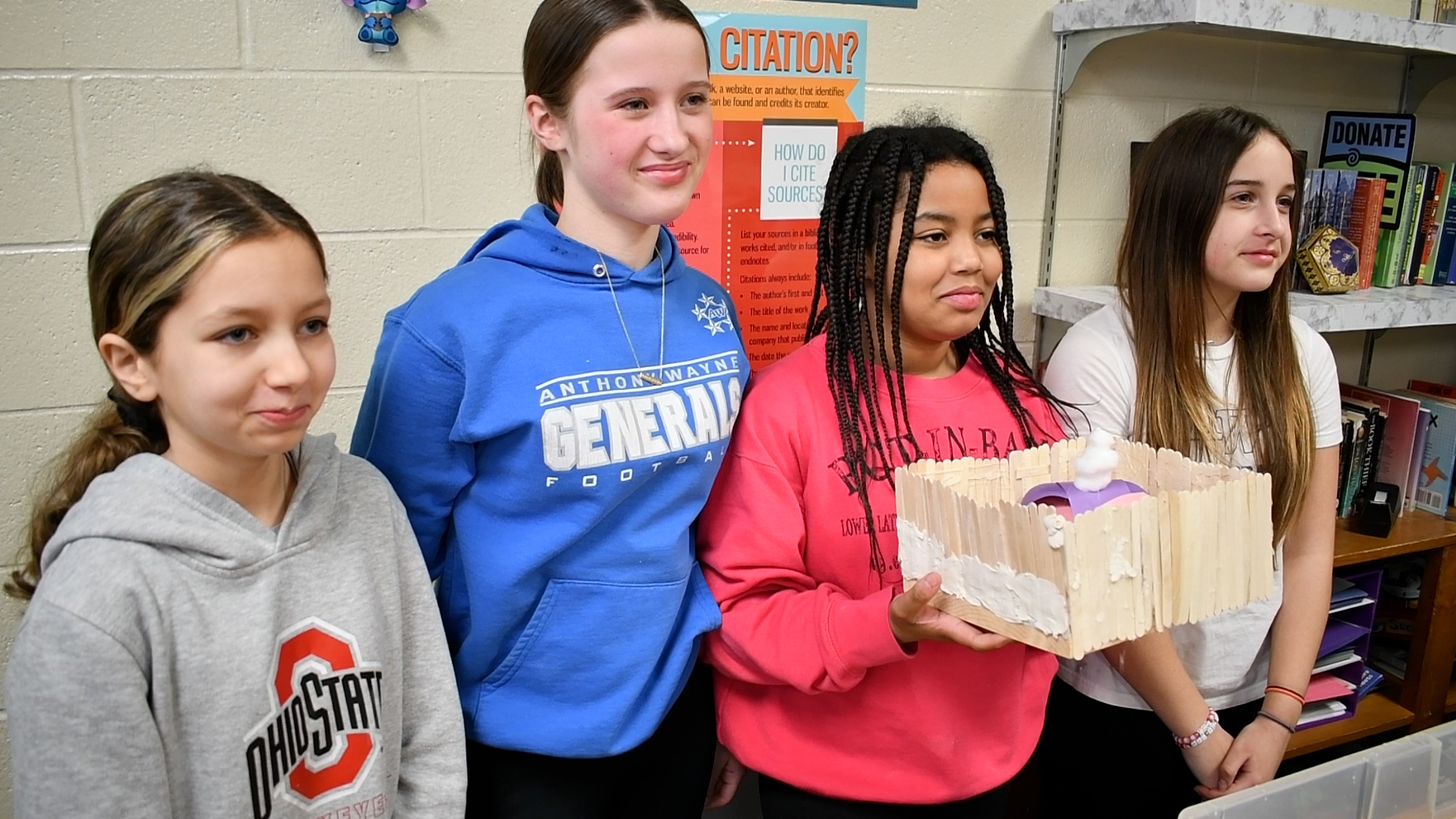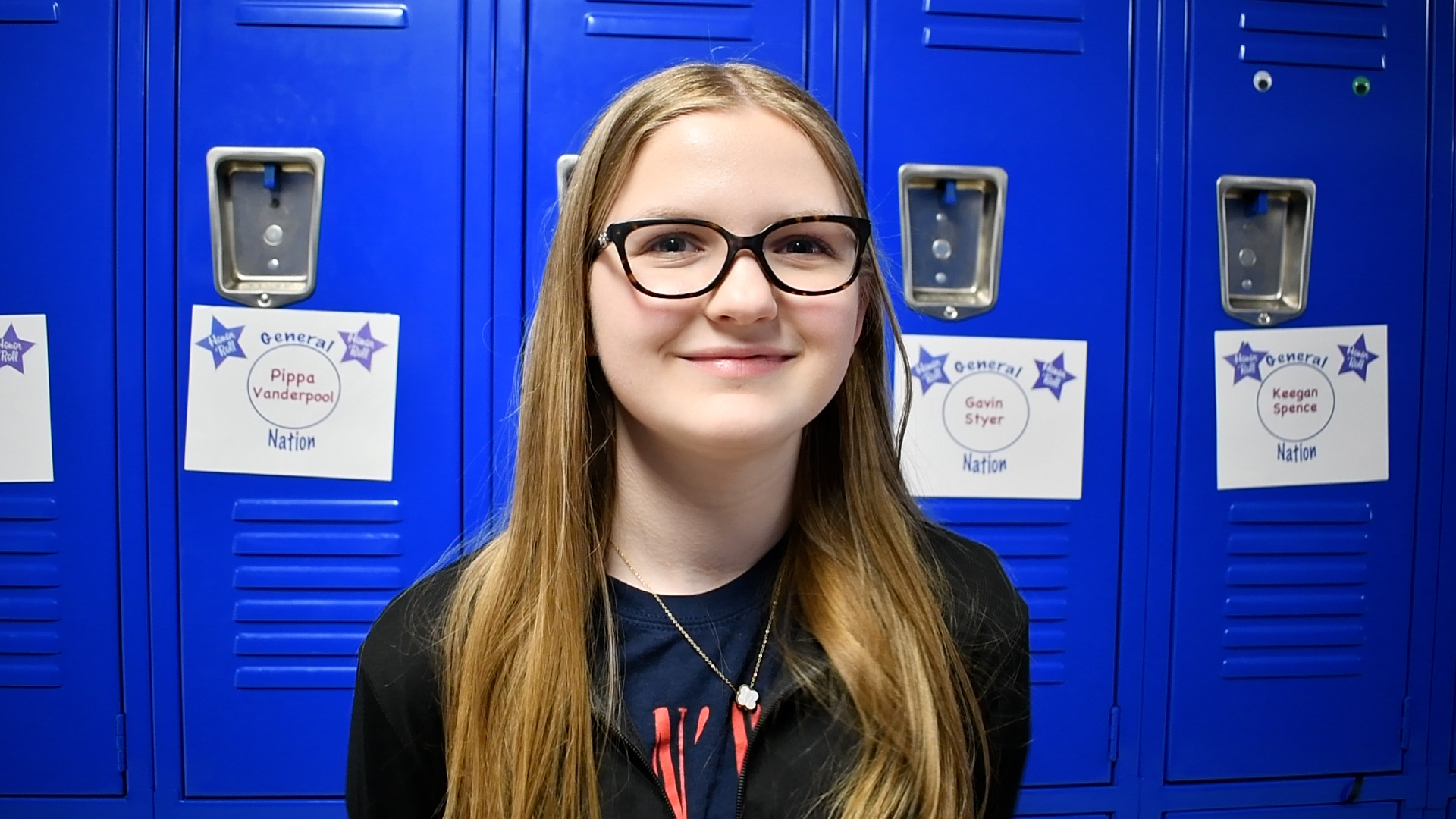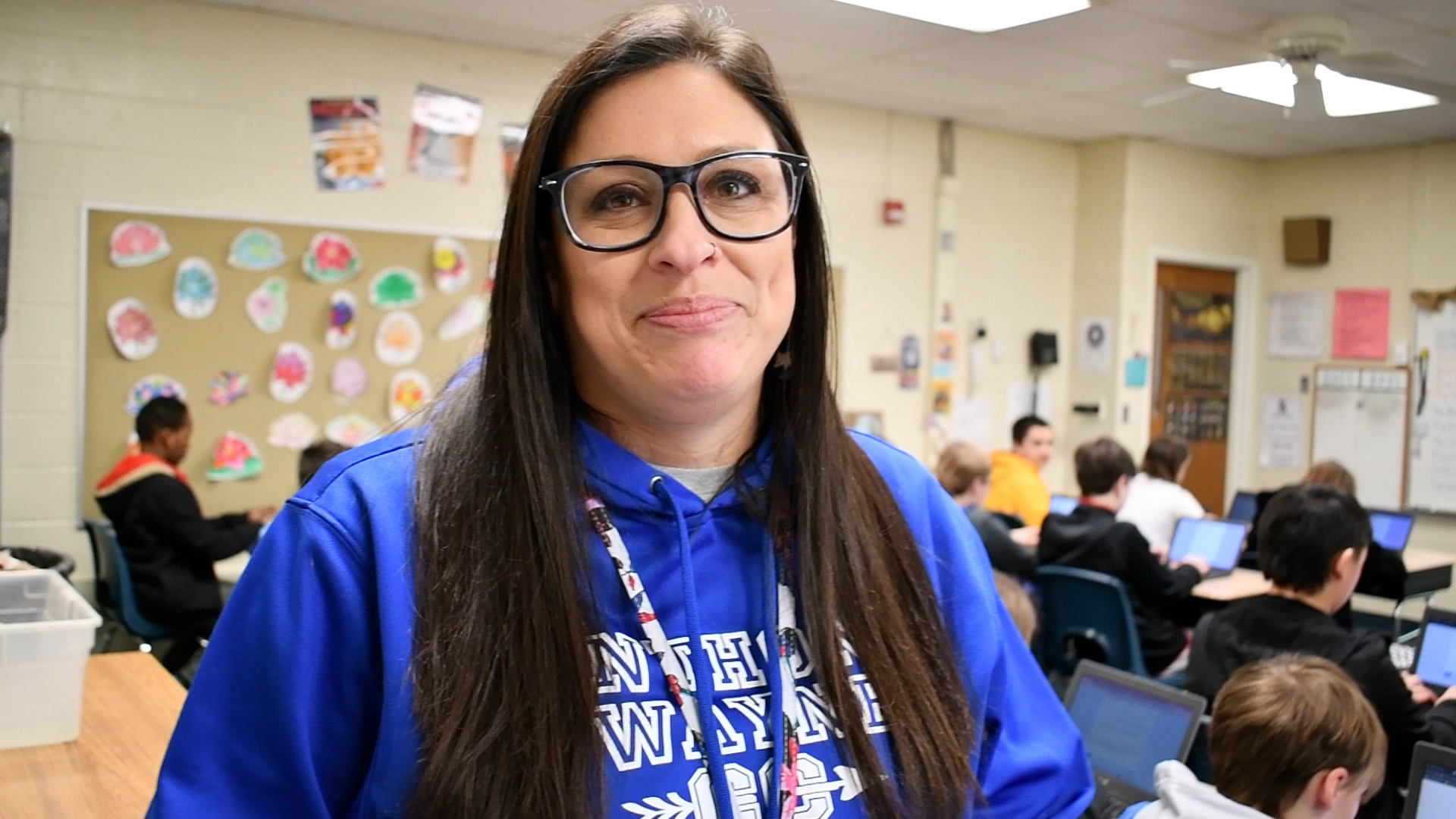 Students prepare to test their design
Students prepare to test their design
Sixth grade social studies students at Fallen Timbers Middle School recently took on a collaborative project that blended their learning about ancient civilizations and engineering and design principles while challenging their problem solving skills.
“Students at this grade level learn about the early civilizations of India, Egypt, China, and Mesopotamia,” said Mrs. Carla Rygalski, FTMS Social Studies Teacher. “They explore the attributes of each civilization, like their governments, religious beliefs, agricultural practices, technological advancements, economic systems, and social structures.”
As a way to demonstrate what they learned, students combined their knowledge of the cultural structures of ancient India with the weather patterns in this region to construct a stupa that could withstand the monsoon season.
 Karis Doro
Karis Doro
“A stupa is a religious building for Buddhists that they would use to meditate to reach enlightenment. They are found in the southeastern parts of India.” said Karis Doro. “Our goal was to make the stupa last for two minutes, and if we lasted until two minutes, we would have passed the protection test.”
Using popsicle sticks, clay, and cotton balls, each group aimed to protect their stupa from rising flood waters.
“During the monsoon season all the rain from the whole year falls in one specific area,” said Bridget Snyder. “Since they get so much rain at one time, they need to be prepared and ready. If it rains a lot, the buildings can be damaged.”
 Bridget Snyder
Bridget SnyderOnce constructed, teams put their designs to the test. Gathered around a tub of water, each team submerged the base of their structure to see if it could hold back the rising flood and keep the water from reaching the stupa.“Ours didn’t do all that well. It sank pretty quickly…most of them did,” said Kaylyn Hahn.
Many of the structures lasted only a few seconds, and only one stupa stayed dry during the full two-minute monsoon test.
“We worked too hard on reinforcing the wall with clay, but we really didn’t work on the bottom filling in all the holes,” said Karis. “Next time, I would start with gluing the popsicle sticks, but instead of starting with covering it with clay, I would focus on filling in the holes.”
 Kaylyn Hahn
Kaylyn Hahn
Overall, the project not only aimed to create structures that could withstand the challenges of the monsoon season but also provided valuable lessons about teamwork, problem-solving, and understanding the cultural and environmental context of the structures they were building.
“It is a challenging project for them and it’s messy, but they have fun with it” said Mrs. Rygalski. “Building the stupas helps reinforce what they learned in the lesson and encourages them to work collaboratively to overcome challenges.”
 Mrs. Carla Rygalski
Mrs. Carla Rygalski
The students agreed that the activity provided an opportunity to consider how other parts of the world must overcome unique challenges.
“I learned how people have to build their structures so they can withstand the heavy rainfall,” said Bridget. “I also learned that they have to use the water that comes down in only a certain amount of time to grow their crop all year, and how they do their everyday activities while the rain is falling.”
They also shared that working in a group has its challenges and that staying focused and overcoming differences of opinion were the biggest obstacles to overcome.
“I think it was less about being successful and learning about the monsoons and stupa. It was also about learning how to work with a group,” said Kaylyn. “It happens a lot when you are older. There aren’t many careers that don’t require you to work with others, so it’s important.”